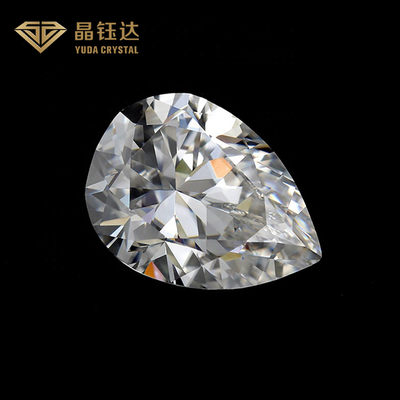Fancy Cut Pear Polished Diamond Certified Lab Grown Diamonds for Ring
Lab Grown Diamonds Description
While natural diamonds take tens or even hundreds of millions of years to form deep in the Earth, lab grown diamonds can take just a few weeks to form in a laboratory, drastically reducing manufacturing time. At present, there are two main ways to make cultured diamonds.
One is high pressure and high temperature. During diamond cultivation, the pure toner is compressed into a growth capsule, which is then placed in a culture chamber, day after day, at a pressure of 5-6 gpa and extremely high temperatures (up to 1,300-1,600 °C). Eventually the carbon atoms join together to form a diamond crystal.
The other is chemical vapor deposition. Breeding process of chemical vapor deposition method is a diamond chip to be placed in a vacuum box, and then in the chamber filled with a mixture of hydrogen and methane gas, the gas provides a carbon atom, under the pressure of certain heating, until the gasification of carbon atoms on the thin layers and layers of sedimentary, like rain, forming uniform diamond coating.
Characteristics Of Lab Grown Diamonds
| The Difference Between Lab Diamond And Natural Diamond |
| Attribute |
Lab Grown Diamonds |
Natural diamond |
Distinction |
| Chemical composition |
C(carbon) |
C(carbon) |
No |
| Refractive index |
2.42 |
2.42 |
No |
| Relative density |
3.52 |
3.52 |
No |
| Dispersion |
0.044 |
0.044 |
No |
| Hardness value |
90 GPA |
90 GPA |
No |
| Thermal conductivity |
2*103 W/M/K |
2*103 W/M/K |
No |
| Thermal property |
0.8*10-6 K |
0.8*10-6 K |
No |
| Light transmittance |
DEEP UV TO FAR TR |
DEEP UV TO FAR TR |
No |
|
Resistivity
|
1016 OHM-CM
|
1016 OHM-CM
|
No
|
|
Compressibility
|
8.3*10-13 M2/N
|
8.3*10-13 M2/N
|
No
|
From a scientific point of view, lab grown diamonds are exactly the same as natural diamonds, the only difference being where they are formed.
Prospects And Advantages Of Lab Grown Diamonds
Currently on the one hand, the decline in global production of natural diamond, synthetic diamond on the other hand, the demand for superhard materials continue to increase, either from the perspective of the demand of industrial demand or jewellery industry point of view, the perfect replacement for lab grown diamonds are natural diamonds, and the current overseas natural diamond giant in artificial diamond products. Therefore, the development prospect of the diamond industry is very good.
Cultured and natural diamonds, by contrast, are crystals made of pure carbon that have identical physical, chemical and optical properties and look the same on the outside. Under the condition of the same quality, it also has the advantages of cost-effective and sustainable development, which is very in line with the personalized needs of the new generation of consumers to enjoy their own light luxury, greatly reducing the purchase threshold of consumers, so that the cultivation of diamonds has gained great popularity.
Lab Grown Diamonds Picture


 Your message must be between 20-3,000 characters!
Your message must be between 20-3,000 characters! Please check your E-mail!
Please check your E-mail!  Your message must be between 20-3,000 characters!
Your message must be between 20-3,000 characters! Please check your E-mail!
Please check your E-mail! 








